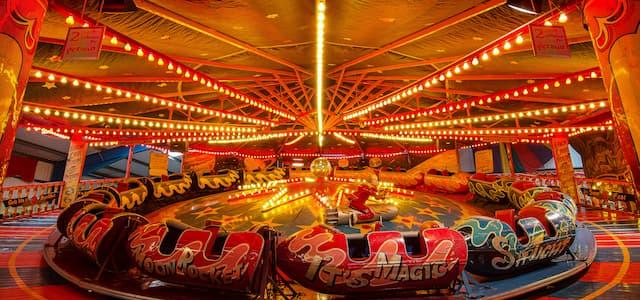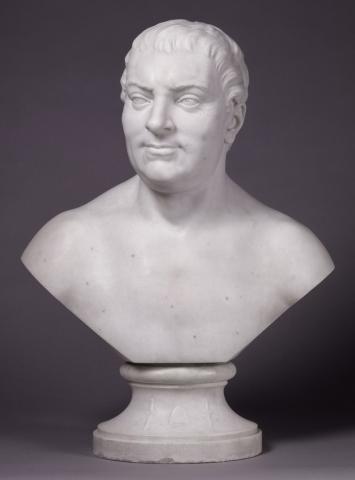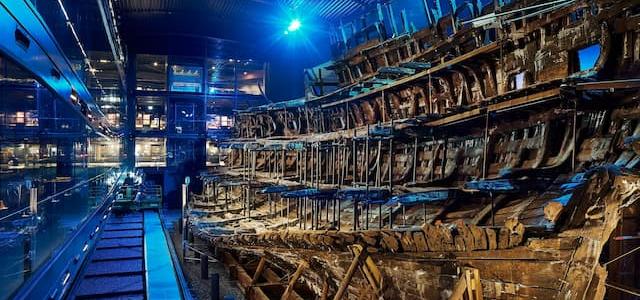
National Portrait Gallery saves UK’s last portrait of the British radical who helped create the USA
The National Portrait Gallery has acquired the last portrait of the 18th century British thinker Thomas Hollis, one of the architects of American independence, to remain in Britain.

The compelling marble bust, c.1760, by Joseph Wilton, RA (1722-1803), the greatest native-born sculptor in mid 18th century Britain, is recognised as the finest likeness of the internationally-renowned defender of civil liberty.
The Gallery acquired the portrait for the nation, following a loan period from a private collection, for £293,157 having received £100,000 towards its purchase from the National Heritage Memorial Fund (NHMF) and £57,000 from the Art Fund.
The purchase was made possible following a generous offer of the bust to the Gallery at less than its market value by the vendor, Dr David Wilson, and a negotiated tax deduction to the advantage of the vendor and the gallery in a private treaty transaction approved by HM Revenue and Customs. David Wilson begins trading this week as a dealer in fine art (www.davidwilsonfineart.com).
At his death, Londoner Thomas Hollis (1720-1774), was recognised as a 'champion of liberty' but due to his retiring nature, his historical importance is only now being recognised. An advocate of the rights of the American colonists, he was closely associated with Benjamin Franklin and John Adams. The growing mismanagement of the American colonies through penal and coercive legislation saw Hollis lead the opposition to the Stamp Act of 1765, which sought to tax legal transactions of subjects who were denied representation in Parliament. This ultimately led to the American War of Independence.
Devoting his life to lobbying for parliamentary reform, opposing corruption and promoting democracy, the liberal thought engendered by his interaction with "The Founding Fathers" eventually influenced the writing of the American Constitution. He was a generous donor to Harvard University where Hollis, the library's electronic catalogue system continues to commemorate his patronage and influence on the founding tenets of American liberty.
Hollis represented American interests to the Prime Minister and tried to change British policy through both Parliament and the press. He influenced domestic and international politics by distributing works of radical political philosophy in England and America and this helped forge a framework for legitimate dissent. He also published the works of leading American radicals, to the extent that by 1770 Hollis "had become," said historian, Professor Caroline Robbins: ".. the busiest literary agent for American writers against the 'usurpations' of George III's ministers."
Wilton's bust shows Hollis bare-chested in the character of the senator Brutus and incorporates the emblems of Liberty cap and daggers to represent Hollis's commitment to the principles of Roman democracy. With its naturalistic carving and unusual half-smile, the bust has a surprisingly life-like quality which, in keeping with Wilton's finest works and intimacy with the sitter, encourages the viewer to see the philosopher as a complex and dynamic character. The celebration of the bust by other contemporaries was neatly encapsulated, more than 12 years after Hollis's death, when John Adams, the future President of the United States of America, saw Wilton's sculpture in 1786 and commented on "the bust of my friend ... in beautiful white marble."
Wilton was one of the foremost sculptors of his age and though he produced relatively few portrait busts his finest are unequalled, and this is one of his finest. Its powerful naturalism and starkness were ground-breaking and was at the forefront of the transition from the baroque to the neo-classical idiom in British portrait sculpture. The National Portrait Gallery owns busts by Wilton of William Pitt, First Earl of Chatham and General Wolfe.
Dr Lucy Peltz, Curator of Eighteenth Century Portraits, National Portrait Gallery, London, said: "This bust captures Hollis's personality and principles and conveys his uncompromising devotion to the principles of liberty. It will now be in the displays to help explore questions of eighteenth-century political protest and to tell the story of the foundations of both British democracy and British sculpture."
Sandy Nairne, Director of the National Portrait Gallery, London, said: "We are delighted that the National Portrait Gallery has, with the help of the National Heritage Memorial Fund, the Art Fund and other supporters, been able to acquire this striking bust of one of the greatest defenders of civil liberties whose work helped shaped the democracies and social policies of both Britain and the United States of America."
Dame Jenny Abramsky, Chair of the NHMF, says: "I'm delighted to hear this beautiful treasure has now been safeguarded for the nation. The trustees of the National Heritage Memorial Fund felt that this acquisition represented a unique opportunity; not only to help secure a rare portrait of one of the most important visionaries of the 18th century but also to purchase the work of one of our most celebrated sculptors."
Notes to editors
Breakdown of figures
National Portrait Gallery Acquisition Fund £36,156.80
National Portrait Gallery Portrait Fund £100,000
National Heritage Memorial Fund £100,000
Art Fund £57,000
Total £293,156.80
Thomas Hollis(1720-74) Libertarian, writer, bibliophile and patron of the arts
The London-born philosopher, radical propagandist and philanthropist Thomas Hollis was politically progressive, devoting his life to lobbying for parliamentary reform, opposing corruption and promoting democracy. Hollis's 'Great Plan' to reform public life, begun in 1754, shaped political debate in Britain and created an identity for the London Opposition, the most significant political force outside government from the 1750s to the 1770s. This group was united by their suspicion of Court and commercial influence over political life and their admiration for a classical ideal of the independent, virtuous, selfless statesman.
Hollis's programme included the anonymous publication and distribution of thousands of volumes and prints promoting the concept of liberty to public institutions in Britain, America and Europe. His patronage was extensive and he wrote articles, designed prints and commissioned coins and medals to promote his political agenda. He promoted the work of sympathetic artists, such as Robert Edge Pine and Giovanni Cipriani, and gave advice to other artists including Joseph Nollekens. He was also heavily involved in the Society for the Encouragement of Arts, Manufactures and Commerce, now known as the Royal Society of Arts. Hollis's substantial cultural achievements and patronage ensured that the Whig concept of liberty and public service continued to have an influence on British political thought and public life.
Hollis was educated at Adams Grammar School until the age of 10, and then in St. Albans until 15, before learning French, Dutch and accountancy in Amsterdam. After the death of his father in 1735, his guardian was a John Hollister. He was trained in this time in public service by John Ward of Gresham College, London. He took chambers with Lincoln's Inn from 1740 to 1748, though without ever reading law. By this time he was a man of considerable wealth having inherited from his father, grandfather and uncle.
In 1748–9 he toured Europe with Thomas Brand (later Brand Hollis) and again during 1750–53, largely on his own, meeting many leading French philosophers and several Italian painters. Back in England, he was an ardent member of the Society of Arts. He proposed Piranesi for membership of the Society of Antiquaries, gave numerous commissions to Cipriani, and, as one of Canaletto's best friends in England, commissioned six paintings from him. These paintings included Old Walton Bridge in which Hollis, his heir Thomas Brand and Hollis's manservant were depicted, also the interior of the rotunda at Ranelagh. He was elected a Fellow of the Royal Society in 1757. He was well connected, knowing Francis Blackburne and Theophilus Lindsey, John Wilkes, several peers, and the elder William Pitt. He was a governor of Guy's and St Thomas's hospitals, and a guardian of the asylum and Magdalen Hospital.
Hollis's main contribution to public service was protecting and advancing English liberty by circulating appropriate books on government. From 1754, he reprinted and distributed literature from the 17th century. Including works such as Toland's Life of Milton, tracts by Marchmont Nedham, Henry Neville, and Philip Sidney, and John Locke's Two Treatises of Government; they were elegantly bound to give them greater effect and tooled with libertarian ornaments such as the liberty cap and owl. To start with the tracts were directed towards libraries throughout Britain and continental Europe; later he turned his generosity to America.
He continued his great-uncle Thomas's practice, as a great benefactor to American colleges, especially Harvard, sending donations and numerous books, often decorated with libertarian symbols. From 1755, his principal American correspondent was Jonathan Mayhew of Boston, and, after his death in 1766, Andrew Eliot. His other benefactions included substantial donations to Berne Library and to the University of Leiden Library. He died suddenly on 1 January 1774. He was unmarried, and after minor legacies left his estates to Thomas Brand, who added Hollis's name to his own.
Joseph Wilton RA (1722-1803) Portrait sculptor
Joseph Wilton occupies a pivotal position in the arts in 18th century Britain and was the greatest native born sculptor at work in the mid to late century. The first British-born sculptor to receive a comprehensive continental training from the leading masters, first in the Low Countries and then in Paris, Wilton perfected his skills after moving to Rome in 1747 and Florence in 1751. It was there that he honed his art through the detailed study and copying of famous antique sculptures in the finest collections in those cities. He executed important work for the English milordi on the Grand Tour, and received numerous accolades, as well as being awarded the Gold Medal at the Academy of St Luke by Pope Benedict in 1750. In 1755 Wilton returned to London in the company of his friend, the architect William Chambers, and the Italian artist Giovanni Battista Cipriani. They brought with them the full flood of the classical style which they had absorbed in their studies and work in Italy and elsewhere.
Wilton was appointed Sculptor to George III in 1761. He was a member of the Royal Society of Arts and a founder member of the Royal Academy. His status as the Academy's leading sculptor is evoked in J.F. Rigaud's group portrait of 1782 which depicts Wilton in the august company of Sir William Chambers, the Academy’s Treasurer, and Sir Joshua Reynolds, its President. Contemporaries also compared Wilton to Phidias, Michelangelo and Bernini, the most revered sculptors of the Classical, Renaissance and Baroque periods. A sizable legacy in 1768 caused Wilton to retire from commercial practice, although later in life he returned to work and executed some monuments and other pieces. Wilton was one of the foremost sculptors of his age and though he produced relatively few portrait busts, his finest have no rival. The present bust is widely accepted as one of Wilton's finest sculptures. Its powerful naturalism and austerity were ground-breaking and placed Wilton at the forefront of the emergence of the Neoclassical idiom in British portrait sculpture.
The Art Fund is the national fundraising charity for art, helping museums to buy and show great art for all to enjoy. Over the past 5 years, the Art Fund has given £24million to help 227 museums and galleries acquire over £195m of art for their public collections. The Art Fund is funded by over 90,000 members who own a National Art Pass, which gives free entry to over 200 museums, galleries, historic houses and castles across the country as well as 50% off many major exhibitions. Find out more about the Art Fund and the National Art Pass at www.artfund.org. The press office can be reached on 020 7225 4888 or at media@artfund.org.
Further information
National Portrait Gallery, please contact: Neil Evans, Press Office, Tel: 020 7312 2452 (not for publication) email: nevans@npg.org.uk. To download press images visit: www.npg.org.uk/press.

